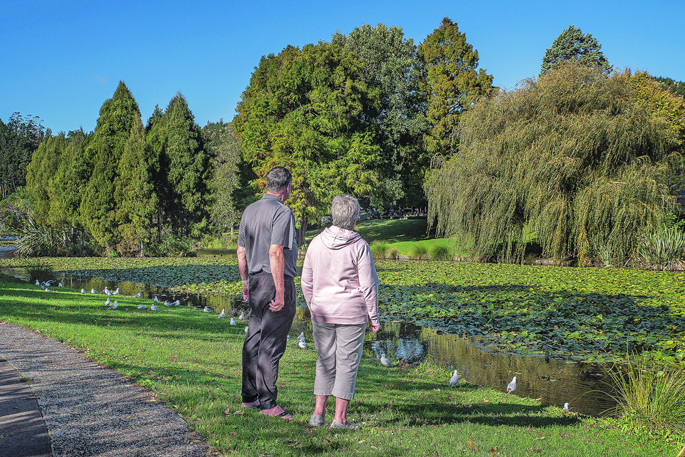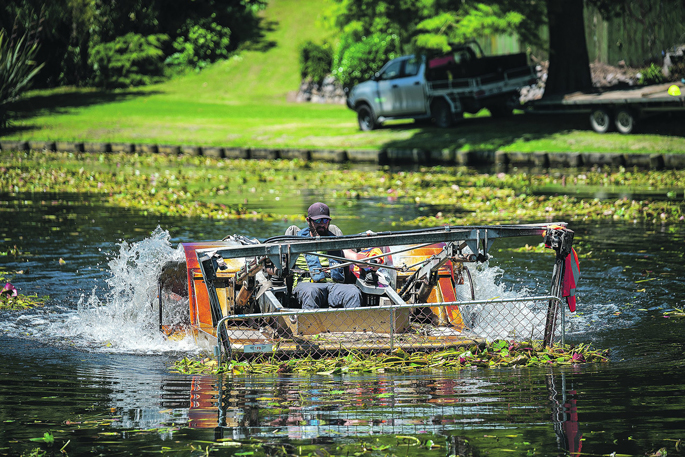After paying up to $100,000 for a report about how to make environmental improvements to Sullivan Lake, Whakatāne's council appears to have no plans to carry out any of the recommended work.
Sullivan Lake Care Group member Dianne Wood addressed Whakatāne District Council at its Long-term Plan hearings on Thursday about the care and restoration of the lake.
“There’s a huge amount of lily and stagnant water, made worse by the spray off by the council a few weeks ago. We’ve now got pungent smelly water.
“There are too many dead ducks, and dead fish. If you want to take a walk around the lake today, there are examples lying on the grass of the water quality.
The 2021-2031 long-term plan included $100,000 to develop a longer-term strategic approach to the management of three urban lakes: Sullivan Lake, Awatapu Lagoon and Matatā Lagoon.
In February, Riverlake water quality scientist and ecologist Keith Hamill presented his report to the council’s living together committee with recommendations for work to improve the three lakes.
Based on this report, the council’s open space operations manager Ian Molony suggested some key management interventions for Sullivan Lake, to be carried out over 10 years at a cost of $360,000.
These included a combined approach of harvesting the water lilies, dredging the silt from the area, bottom lining to suppress regrowth and creating a wetland area to trap sediment, nutrients and improve biodiversity.
 Residents around Sullivan Lake would like to work together with Whakatāne District Council to have the lilies removed from Sullivan Lake and improve the quality of the water.
Residents around Sullivan Lake would like to work together with Whakatāne District Council to have the lilies removed from Sullivan Lake and improve the quality of the water.
No decision was made at the February meeting about what actions to take. The report said any decisions would be made as part of the long-term planning process.
But Mrs Wood noted in her submission that there was no mention of Sullivan Lake in the proposed long-term plan for 2024-2034.
“We ask that you adopt Keith Hamill’s recommendations to enhance the lake ecosystem and recreational value. You’ve paid an awful lot for that report, and to not even hear Sullivan Lake mentioned in your long-term plan after spending that much ratepayer’s money is pretty abhorrent.”
She said the care group included over 80 residences.
“It’s not just those that back onto the lake that are concerned about this.”
She reminded the council of a petition signed by more than 300 people, which the group presented to the council during the long-term plan submissions in 2021.
The care group had not seen any work done to improve the water quality of the lake, she said.
“So, you can absolutely imagine our horror to hear we are not even on the long-term plan anymore. There’s been a lot of reports done ... No more talking, it’s time for action.”
 Recent spraying of the weeds around the edge of the lake has revealed rubbish dumped in the water, such as this old tyre.
Recent spraying of the weeds around the edge of the lake has revealed rubbish dumped in the water, such as this old tyre.
Susan Barton, who grew up near the lake and moved back there 20 years ago, approached Local Democracy Reporting [Beacon] about queries by the mayor and councillors at public meetings regarding the cause of the pollution and establishment of water lilies.
In response to Mrs Wood’s submission on Thursday, councillor Gavin Dennis asked whether it was “some well-meaning person who planted them who thought they would look pretty”.
At the meeting in February, where Mr Hamill presented his report, Mayor Victor Luca suggested the high phosphorous levels in the lake could be due to too much fertiliser being used by “enthusiastic gardeners” around the edges of the lake.
But Mrs Barton said blame for the lake's conditions sat with council. The water lilies had only become established in the lake after the flooding of the Wainui Te Whara Stream in 2014.
“A lot of people don’t realise that stormwater from Alexander Avenue actually drains into Sullivan Lake.”
She said they likely washed out of people’s garden ponds during the flooding, while silting in the lake from stormwater had caused them to flourish.
“It’s like a cancer, the way it spreads. When I first reported the lilies to the council about eight years ago, there was only a small clump. If they had done something at the time they might have fixed it. Now it’s out of control.”
She said subsequent actions by the council to harvest the weeds in 2020 had simply churned them up, causing them to grow into new plants.
Spraying of the weeds was ineffective and created a bad smell as the vegetation rotted in the water, she said.
Weed spraying had been carried out around the edges of the lake in March for health and safety reasons. Children had been unable to distinguish the edge of the lake, causing a drowning risk.
Mrs Wood said the care group were prepared to help with the work.
“We are here to assist. We want to work with both the councils and iwi to create a better environment for Sullivan Lake.”
LDR is local body journalism co-funded by RNZ and NZ On Air.




0 comments
Leave a Comment
You must be logged in to make a comment.